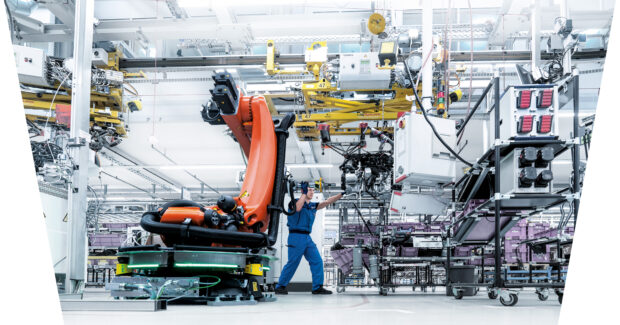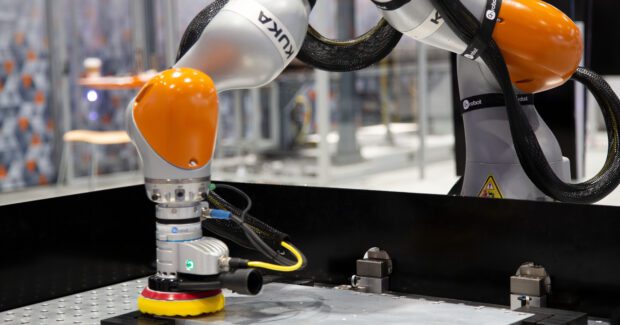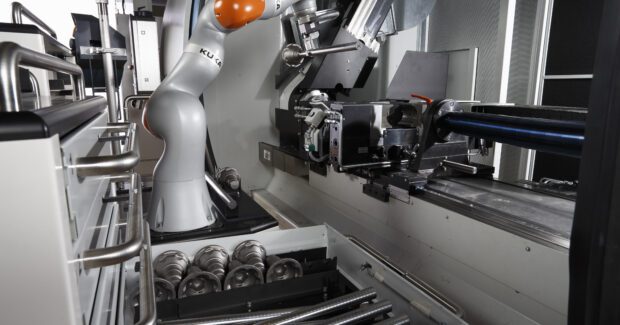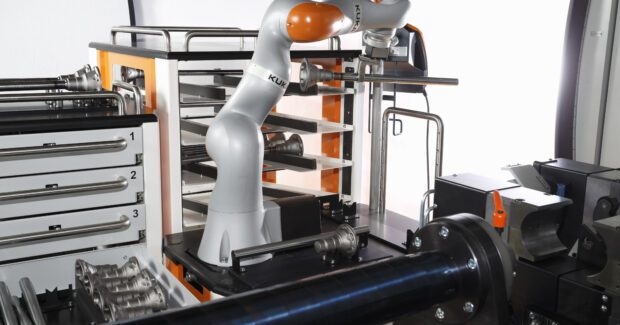Maximizing Automation Productivity
A deep dive of the processes under consideration for automation will match your shop to the type and amount of equipment you need to succeed.
Posted: January 17, 2023
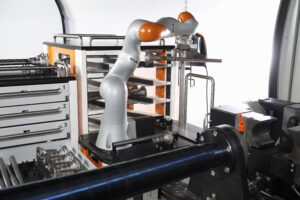
Manufacturers invest in automation technology to maximize the efficiency of their operations. The goal is to increase output by producing parts faster; eliminating wasted production time is a key contributor to greater throughput. Even when the actual cutting, welding and other steps in manufacturing processes are optimized, automation minimizes the time lost between those steps and produces cumulative savings.
Whether embarking on a new automation initiative or updating current operations, a shop needs to analyze and understand the entire manufacturing process and how it fits into the facility’s overall production flow. The first consideration is determining if automating a certain process will truly be cost effective. For example, the expense of automating a low-volume, low-value process may outweigh the benefits. Increasing output of one process may simply create a bottleneck of stranded parts before the next step in production.
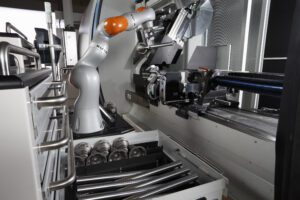
A manufacturer must focus on the purpose of a process, how it is currently done, and what the shop expects to achieve via automation. Especially for shops making an initial foray into automation technology, collaborating with a partner — an automation integrator or OEM provider of automation systems — is essential for success. It is important to find a partner with experience in the manufacturer’s specific industry.
There’s a good chance that an integrator specializing in automating packaging for cosmetics, for example, will not be the best partner in automating welding or similar operations in an industrial fabricating and metalworking environment. A partner that focuses on automation solutions for a manufacturer’s particular industry can provide relevant experience and perspective. In addition to developing automation systems for individual processes, a partner thoroughly familiar with the workings of the manufacturer’s industry will understand the effects of automation across a facility’s operations and perhaps suggest combining automation technologies for even greater efficiencies.
A shop that simply acquires the mechanical elements of automation and applies them on a do-it-yourself basis may select equipment that doesn’t address or may even exaggerate a process’s shortcomings. For example, collaborative robots (cobots) today are often considered a valid path to automation. Many shops employ cobots to avoid having to meet protective fencing and other safety regulations just because cobots and shop personnel can work safely in near proximity to each other.
However, in pursuit of safety (and regulatory compliance), cobots work at speeds (~250mm/sec 10″/sec) that are about a tenth that of most industrial robots and also have elaborate impact avoidance and reaction features. Cobots generally also have limited reach and payload capabilities relative to industrial robots. Those limitations mean that applying a cobot in a workstation that shop personnel visit only a few minutes per hour for part loading or inspection will have significantly limited output compared to standard industrial robots. Meanwhile, standard robots can be fitted with light curtains, area scanners and other systems that initiate safety-related stoppage of robotic movement when personnel enter the work area and allow movement to resume when personnel leave. When the interruptions are brief and infrequent, the robot will operate at full speed and full capacity the rest of the time, maximizing throughput for high volume applications.
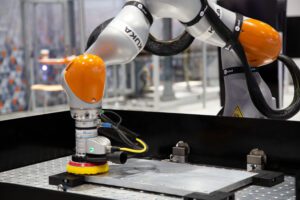
Automation reduces the time that a machine has to pause between manufacturing operations. Standard automation options include equipment that can minimize load/unload times. Double-headed end effector tooling enables a robot to pick up an unprocessed workpiece, reach into a machine to remove a completed part, then rotate the tool to insert the unprocessed workpiece into the machine, eliminating the time required to make separate lengthy moves to remove and insert the work. Automatic end of arm tool changing capability further expands a robot’s flexibility to handle a variety of parts.
It can be difficult to cost-effectively design and implement automation technology for low-volume custom fabrication operations. In those situations, however, automation can play a large role in part manipulation, ergonomics and employee safety. Automated part-transport systems provide lift assist when moving large parts. Automated in-process part positioning and manipulation will increase welding convenience and safety. Modular approaches to assembling automation equipment systems provide application flexibility and reduce the complication and expense of creating and implementing systems from scratch.
Automating welding processes in fabrication operations, often involving software and vision systems, offers high repeatability and the capacity to perform lengthy welds without interruption. Offering long reaches and consistent performance, an automated welding system can perform simple, basic welds on large pieces of material and free experienced welders to handle precision finish welding operations.
Automation of minor operations outside the main manufacturing processes will significantly reduce overall production times. Automation systems can perform jobs such as deburring and polishing that consume time and do not require skilled employee labor. Simple painting operations are also candidates for automation.
Simulations provide multiple benefits when designing and implementing an automation system. In its most basic form, a simulation will show if a planned system has the reach and payload capacity to do the work required, will fit in the floor space allotted for it, and if it will interfere with other aspects of the process and other shop equipment. A simulation will also demonstrate if the system under consideration will meet cycle time goals.
Manufacturing workers traditionally have regarded automation as a threat to jobs, but the labor environment has changed. First, a shrinking workforce and decline in the attractiveness of manufacturing jobs have put many shops in the situation of needing to implement automation to simply keep the factory open. The dull, dirty and dangerous jobs that automation replaces are impediments to hiring and retaining people to do them.
Job satisfaction is an important factor in employee hiring and retention; career path availability and opportunities for growth and higher pay exist for employees who learn to program automation systems or perform inspections as opposed to mindlessly loading and unloading parts for low wages with no chance of advancement.
Automation is not simply finding ways to make processes run faster. Maximizing automation productivity and cost-effectiveness follows comprehensive analysis of the processes being considered for automation and how those processes fit in a facility’s workflow overall. The process will then dictate the type and amount of automation equipment that will maximize a shop’s productivity and profitability.
Subscribe to learn the latest in manufacturing.





